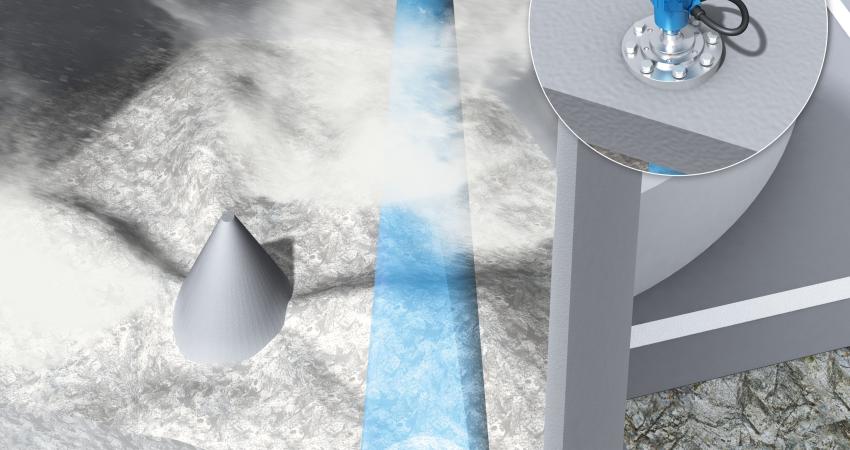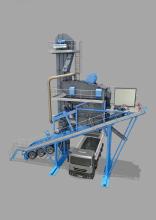
Level measuring specialists Hycontrol have designed and installed a multi-point bitumen level measuring and overfill protection system for
The system, utilising microwave and capacitive technologies, has been fitted to four 36.5tonne tanks containing hot bitumen, replacing the existing ‘cat and mouse’ level system. This out-of-date mechanical arrangement, based on pulleys and counterweights, was becoming increasingly maintenance-heavy, raising serious concerns over its long-term reliability.
The Hycontrol instrumentation for this application has been designed to fall within strict budget restraints whilst also ensuring the systems meet the latest Eurobitume / RBA (Refined Bitumen Association) guidelines designed to prevent spillages and accidents during the filling and operation of hot bitumen tanks.
The RBA guidelines are very clear, mandating that hot bitumen tanks must be fitted with a continuous level measuring system, a high level alarm (HLA) and a totally independent high-high level alarm (HHLA). To avoid product spillage whilst the delivery hose/line is being cleared, the HLA should be set to trigger at the available capacity of the tank less 10%, whilst the HHLA should be set to warn operators that there is only 7.5% of the available tank capacity remaining.
The accurate and reliable measuring of bitumen presents a number of challenges. Traditional ultrasonic technology cannot cope with the high temperatures, pressure changes and product build-up on the transducer heads encountered in such harsh environments. Any invasive measurement technology can be susceptible to product build-up on the sensors, rapidly resulting in degradation in performance.
Hycontrol have extensive experience in providing effective RBA compliant bitumen safety systems based on their Time Domain Reflectometry (TDR) technology*. Unlike many other level measuring technologies, Hycontrol’s VF03 TDR sensors are said to be unaffected by product build-up on the probes. Performance is also not affected by changes in pressure, temperature, dielectric constant or viscosity, making TDR the perfect solution for hot bitumen. For this application, the bitumen levels are measured using Hycontrol’s high temperature VF03 TDR sensors. The stainless steel probes are usually fitted to flanges at the top of the tanks and extend down into the hot bitumen. The probes allow a very narrow measuring profile up to a maximum range of 24 metres and this is particularly useful for measurements in tanks which have internal structural supports.
In line with RBA safety guidelines, the Hycontrol system at Botley provides a secondary independent system to prevent over-filling, based on high-level capacitive ME81 sensors mounted on flanges at the top of the tank. Traditional capacitance switch technology has measurement limitations, mandating that different versions are required depending on the dielectric constant and conductance of the material being monitored. By comparison, Hycontrol’s advanced ME Series use the same transmitter and sensor for all applications, simplifying maintenance and minimising inventory outlay. All eight sensors are connected back to a bespoke Hycontrol instrument panel featuring digital indicators displaying the levels in each tank and high level warning beacons.
Depot manager John Glasspool is delighted with the new system: “We recognised that we needed to update our existing bitumen measuring system, but capital outlay was a key issue. Hycontrol were very flexible and worked closely with us to provide exactly the right solution within our budget. The installation was carried out quickly and efficiently, with minimum disruption to our operation. We now have full confidence in the RBA compliant measuring system and are not wasting time repairing the old mechanical system. We are currently working with Hycontrol on the installation of a silo protection system to prevent over-pressurisation on the silo used for storing our asphalt reinforcement fibre.”
*TDR technology, originally used to detect breaks in subsea communication cables, uses pulses of low power microwaves sent along the conducting probes. At the point where the waves meets the air-product interface, they are reflected by the product back along the probe. The measured time between emission and reception back at the sensor head is proportional to the distance. This information is then converted to the level in the tank.








